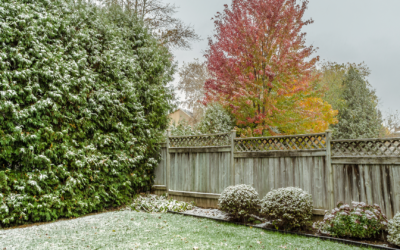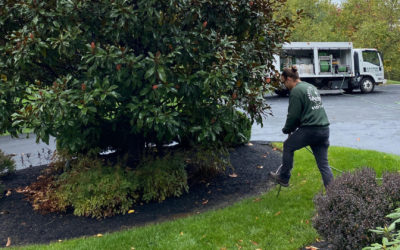The weather during the end of December in the Northeast was exceptionally cold and windy. We experienced a significant overnight temperature from mild temperatures to near zero. Weeks later, this extreme weather change caused noticeable damage to Skip Laurels (a type of bush).
The lush green outer foliage turned shades of orange and brown. A close inspection of the twigs revealed that this year buds may not have been damaged. We will find out in the spring if these buds did survive.
Until then, the Skip Laurels will shed these burnt of leaves. To help improve their vigor we recommend a spring fertilization treatment to encourage the new growth. We recommend applying an anti-desiccant treatment to help prevent this type of injury. This is applied to the foliage in late fall. The treatment is intended to help prevent the loss of moisture through the leaves so they do not dry out.
Anti-desiccant treatments can also be applied to other plants like boxwood, holly, and rhododendron. It is the best step to take if you are concerned about sensitive plants. Unfortunately, extreme changes in weather will overpower this treatment but can hopefully reduce the extent of the damage.
The summer of 2022 was one of the driest on record, but we were fortunate enough to avoid drought conditions. This was extremely stressful for both young and mature trees. Trees in these groups are often at risk due to not having a well-established root system (young trees) or are already dealing with too many stress factors that one more will lead to their demise (old trees).
Oak trees, specifically the Red, Scarlet, and Pin species are at risk due to a disease that looks similar to drought stress. The disease is called Bacterial Leaf Scorch and begins to appear by July. It is caused by a fungi or bacterium that invades and plugs the water and nutrient-conducting vessels of the plant. This causes the leaves to scorch and fall off prematurely during the summer.
The timeframe to apply the antibiotic is in the spring once the leaves have fully expanded. The potassium phosphite fertilizers can be applied from the spring through the summer.
This is a frustrating disease because there is no known cure. We can slow the progression down by using ani-biotics, supplemental watering during dry months, and fertilization with potassium phosphite.
American and European Beech trees are facing a new risk. Beech Leaf Disease is a newer issue we are seeing move into the area. This is a nematode that causes damage to the tree’s leaves which reduces its vigor and could eventually kill the tree.
While there is no known cure research is being carried out by universities to find a management plan. The latest research recommends treating the foliage with the appropriate treatment as well as fertilizing it with potassium phosphite in the spring.
Temperatures have remained mild throughout January with persistent rainfall. Some bulbs and groundcovers have begun to pop up through the soil. We still have February and March to go before winter is finished.
Looking for ways to be proactive? Reach out for more information regarding our seasonal services.




